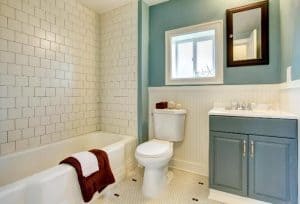Environmental Impact of FG Bathtub Reglazing
In the quest for sustainable living, homeowners are increasingly seeking eco-friendly options for home maintenance and improvement. One area of interest is the refurbishment of bathroom fixtures, particularly bathtubs. When considering the environmental impact, individuals often weigh the pros and cons of different repair methods. In this article, we will explore how the environmental impact of bathtub reglazing compares to traditional repair methods. Contact us to learn more about tub resurfacing
Safe Tub and Tile Repair by FG

The Basics of Bathtub Repair
Before delving into the environmental considerations, let’s briefly examine the two primary methods of bathtub repair: reglazing and traditional repair. Traditional repair involves removing the damaged layer, which may include the use of chemicals and sanding. Subsequently, a new coating or material is applied to restore the bathtub’s surface. On the other hand, reglazing, also known as refinishing or resurfacing, involves applying a new layer of finish directly over the existing surface after thorough cleaning and preparation.
Chemical Usage
One critical aspect to consider when evaluating the environmental impact is the chemicals used in both reglazing and traditional repair methods. Traditional repair often involves the use of strong solvents, adhesives, and coatings that emit volatile organic compounds (VOCs). VOCs contribute to air pollution and can have adverse health effects. In contrast, reglazing typically utilizes low-VOC or VOC-free coatings, making it a more environmentally friendly option. Homeowners concerned about air quality and the potential health risks associated with chemical exposure may find reglazing to be a preferable choice.
Energy Consumption
Another factor to consider is the energy consumption associated with each method. Traditional repair methods, such as replacing the entire bathtub or using energy-intensive processes like sanding, can contribute to a higher carbon footprint. In contrast, reglazing generally requires less energy as it involves surface-level restoration without the need for extensive material extraction, manufacturing, and transportation. By opting for reglazing, homeowners can reduce their overall energy consumption and contribute to a more sustainable lifestyle.
Material Waste
The generation of material waste is a significant concern in any renovation or repair process. Traditional repair methods often result in the removal and disposal of the existing bathtub, leading to increased landfill waste. In contrast, reglazing minimizes material waste by preserving the existing structure. This not only reduces the environmental impact but also aligns with the principles of the circular economy, promoting the reuse of existing resources.
Longevity and Durability
The longevity and durability of the repaired surface also play a role in assessing environmental impact. Traditional repairs may sometimes offer a longer lifespan, particularly if the entire bathtub is replaced. However, reglazing can extend the life of the existing fixture for a considerable period, reducing the need for frequent replacements. The longer a bathtub remains in use, the lower its overall environmental impact, as fewer resources are consumed in the manufacturing and installation of new fixtures.
Local Impact
Considering the local impact is crucial when evaluating environmental sustainability. Traditional repair methods may involve extensive transportation of materials, contributing to greenhouse gas emissions. In contrast, reglazing is often performed on-site, minimizing transportation-related environmental impact. Homeowners seeking to reduce their carbon footprint may find that reglazing aligns more closely with their environmental values.
Conclusion:
In the pursuit of sustainable living, homeowners have various options to consider when it comes to bathtub repair. Comparing the environmental impact of reglazing and traditional repair methods reveals that reglazing tends to be a more eco-friendly choice. With lower chemical usage, reduced energy consumption, minimized material waste, and a local focus, reglazing emerges as a viable solution for those who prioritize environmental sustainability in their home improvement projects. As consumers increasingly seek greener alternatives, reglazing presents itself as a responsible and environmentally conscious choice for preserving and revitalizing bathroom fixtures.
